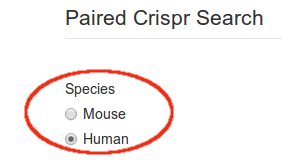Hi all,
To keep it brief I have about 3 million, 23bp sequences (gRNAs) which are putative CRIPSR-Cas9 sites, all of which I need to screened for off-target sites against the hg19 genome. I'm looking for mappings with up to 4 mis-matches, but for ALL alignments to be reported.
I've been using an R package called CRISPRseek, but to scan each gRNA would take ages, so I thought I would look at using NGS mappers to do the job.
The Sanger use bwa with these params:
bwa aln -n 5 -o 0 -l 20 -k 4 -N -m 1000000000 ${GENOME} ${CRISPR_FQ_FILE}
I tried this using just one gRNA, and the number of hits I got back were about 150 fewer than the R package function (350 vs 500). I manually looked at some sequences bwa missed, and I see no reason why bwa would reject them.
The question is whether there is another aligner I could consider? STAR will not work, and I don't think bowtie will allow up to 4mm. Alternatively, if there is a tweak to the above params I would be happy to hear it.
TIA,
Sham
To keep it brief I have about 3 million, 23bp sequences (gRNAs) which are putative CRIPSR-Cas9 sites, all of which I need to screened for off-target sites against the hg19 genome. I'm looking for mappings with up to 4 mis-matches, but for ALL alignments to be reported.
I've been using an R package called CRISPRseek, but to scan each gRNA would take ages, so I thought I would look at using NGS mappers to do the job.
The Sanger use bwa with these params:
bwa aln -n 5 -o 0 -l 20 -k 4 -N -m 1000000000 ${GENOME} ${CRISPR_FQ_FILE}
I tried this using just one gRNA, and the number of hits I got back were about 150 fewer than the R package function (350 vs 500). I manually looked at some sequences bwa missed, and I see no reason why bwa would reject them.
The question is whether there is another aligner I could consider? STAR will not work, and I don't think bowtie will allow up to 4mm. Alternatively, if there is a tweak to the above params I would be happy to hear it.
TIA,
Sham


Comment